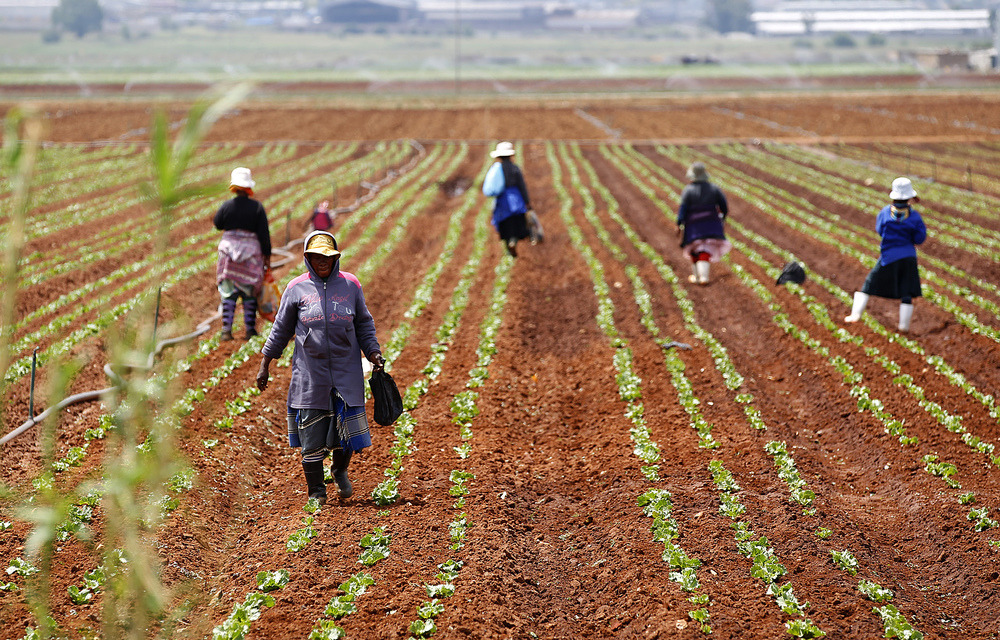The agriculture sector in Africa has a huge social and economic footprint. It provides employment for about two-thirds of Africa’s working population and for each country, it contributes an average of 30% to 60% of GDP and about 30% of the value of exports. In sub-Saharan Africa, more than 60% of the population are smallholder farmers, and about 23% of the region’s GDP comes from agriculture.
Africa has diverse agro-ecological zones, ranging from the rain-forest vegetation with bi-annual rainfall to relatively sparse, dry and arid vegetation with low unimodal rainfall. The enhancement of sustainable agricultural development is fundamental to the attainment of increased economic growth, food security and the eradication of poverty.
Sustainable agricultural practices play a key role in mitigating the threat that climate change has on the existence of this important sector in Africa. Agriculture is sensitive to weather and climate. Its existence heavily depends on soil, water and other natural resources that the climate affects. While changes such as in temperature, precipitation and frost timing could lengthen the growing season or allow different crops to be grown, it could also make agricultural practices more difficult. The effects of climate change on agriculture will depend on the rate and severity of the change, as well as the degree to which the farming community in Africa can adapt.
Production will struggle to keep up as crop yields level off in many parts of the continent, ocean health declines, and natural resources — including soils, water, and biodiversity — are being stretched dangerously thin. For example, projected increases in temperatures, changes in precipitation patterns, changes in extreme weather events, and reductions in water availability may all result in reduced agricultural productivity. Increases in the frequency and severity of extreme weather events can also interrupt food delivery and result in increased food prices. Increasing temperatures can also contribute to spoilage agricultural products, thus affecting value chains. These result in shifting agroecosystem boundaries, invasive crops and pests, nutritional quality is compromised and lowering livestock productivity.
Other aspects of climate change is the effect of air pollution, wildfires and increased pests. Air pollution may damage crops, plants, and forests because when plants absorb large amounts of ground-level ozone, they experience reduced photosynthesis, slower growth, and higher sensitivity to diseases. Wildfires, which pose major risks to farmlands and grasslands, will also increase. The occurrence and range of insects, weeds, and diseases will increase as a result of temperature and precipitation changes. Heat and humidity can also affect the health and productivity of animals raised for meat, milk and eggs.
Climate change is expected to increase the frequency of heavy precipitation in Africa, which will harm crops by eroding soil and depleting soil nutrients. Heavy rains can also increase agricultural runoff into oceans, lakes, and streams, thus, harming water quality. Sea level rise and storms also pose threats to coastal agricultural areas. These threats include erosion, agricultural land losses and saltwater intrusion. To top it off, agricultural workers face several climate-related health risks. These include exposure to heat and other extreme weather, pesticides, disease-carrying pests and degraded air quality.
Africa’s agricultural sector is already being affected by climate change. For example, the Mount Kenya glacier ecosystem is a biodiversity hotspot that provides water for more than two million people and the area has long been one of East Africa’s most productive agricultural areas. But rising temperatures over the past century is resulting in the glaciers losing ice volume, affecting agricultural production further down.
Africa’s full agricultural potential is yet to be discovered. For example, Africa could produce two to three times more cereals and grains, which would add 20% more cereals and grains to the worldwide output. Similar increases could be seen in the production of horticulture crops and livestock. While Africa’s agricultural potential is significant, unlocking it requires practical, on-the-ground effort and innovation to mitigate climate change.
Although focusing on the growth potential of the agricultural sector is important, creating enabling conditions and an environment for the continuity of this sector’s value chains is going to be crucial. Substantial investments in adaptation will be required to maintain current yields and to achieve production and food quality increases to meet demand.
The World Bank says climate-smart agriculture, an integrated approach to managing crops, livestock, forests and fisheries, can mitigate the effect of climate change. For example, incorporate climate-smart farming methods such as climate forecasting tools, planting cover crops and managing climate-related production threats. Agricultural producers can strategically apply fertilisers and keep their animals out of streams to reduce nutrient-laden runoff.
Source : Mail&Guardian

